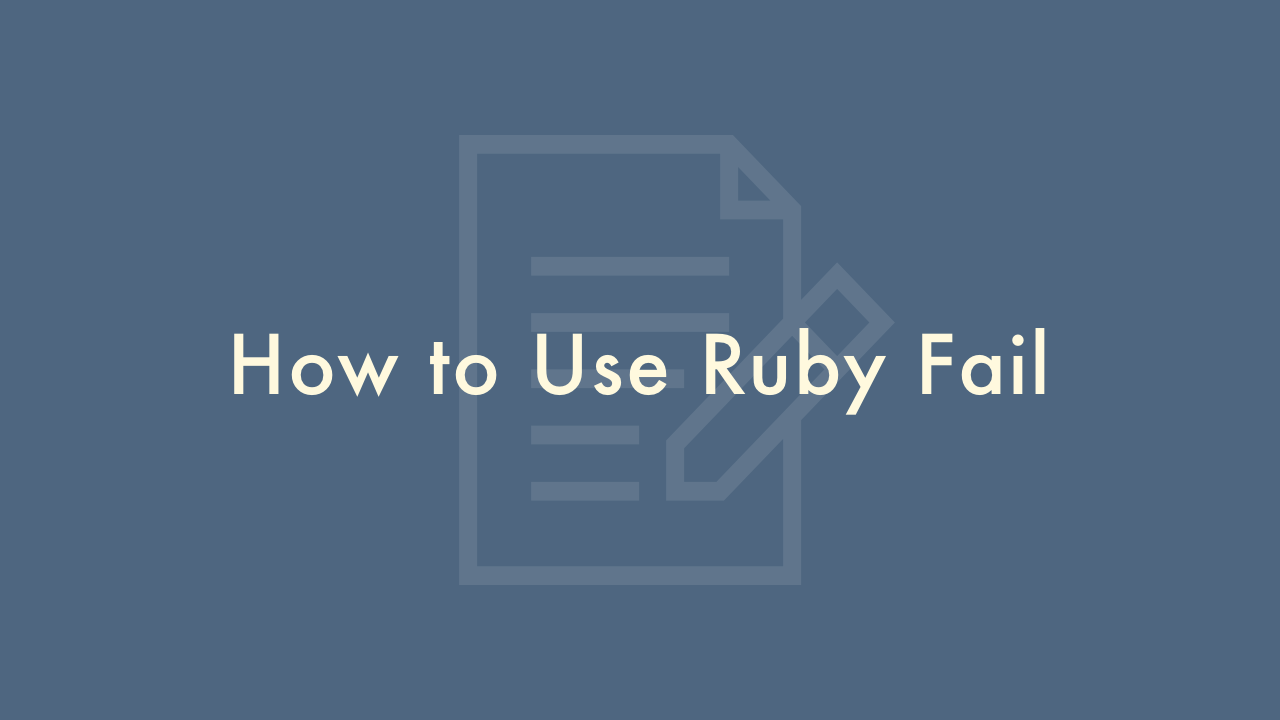How to Use Ruby Fail

Contents
In this article, you will learn how to use Ruby fail.
Using Ruby Fail
Ruby’s fail keyword is used to raise exceptions in your code when something goes wrong. Exceptions are a way to handle errors and unexpected behavior in your program.
There are a few ways to use fail in Ruby:
Basic usage
You can use fail with a message to raise an exception. For example:
fail "Something went wrong!"This will raise a RuntimeError with the message “Something went wrong!”.
Custom exception classes
You can also create your own exception classes to use with fail. This allows you to create more specific exceptions for your code.
To create a custom exception class, you can inherit from the StandardError class, like this:
class MyCustomError < StandardError
end
You can then use this custom exception class with fail:
fail MyCustomError, "Something went wrong!"This will raise a MyCustomError exception with the message "Something went wrong!".
Raising exceptions with a condition
You can also use fail to raise an exception if a certain condition is met. For example:
x = 10
fail "x must be greater than 10" if x <= 10
This will raise a RuntimeError with the message "x must be greater than 10" if x is less than or equal to 10.
Raising exceptions with a block
You can also use fail with a block to perform some action before raising the exception. For example:
fail "Something went wrong!" do
# Do some cleanup or logging here
end
This will raise a RuntimeError with the message "Something went wrong!", but will also execute the block before raising the exception.
Rescuing exceptions
When you raise an exception with fail, you can rescue it with a begin/rescue block. For example:
begin
fail "Something went wrong!"
rescue RuntimeError => e
puts e.message
end
This will raise a RuntimeError with the message "Something went wrong!", but will also rescue the exception and print the message.